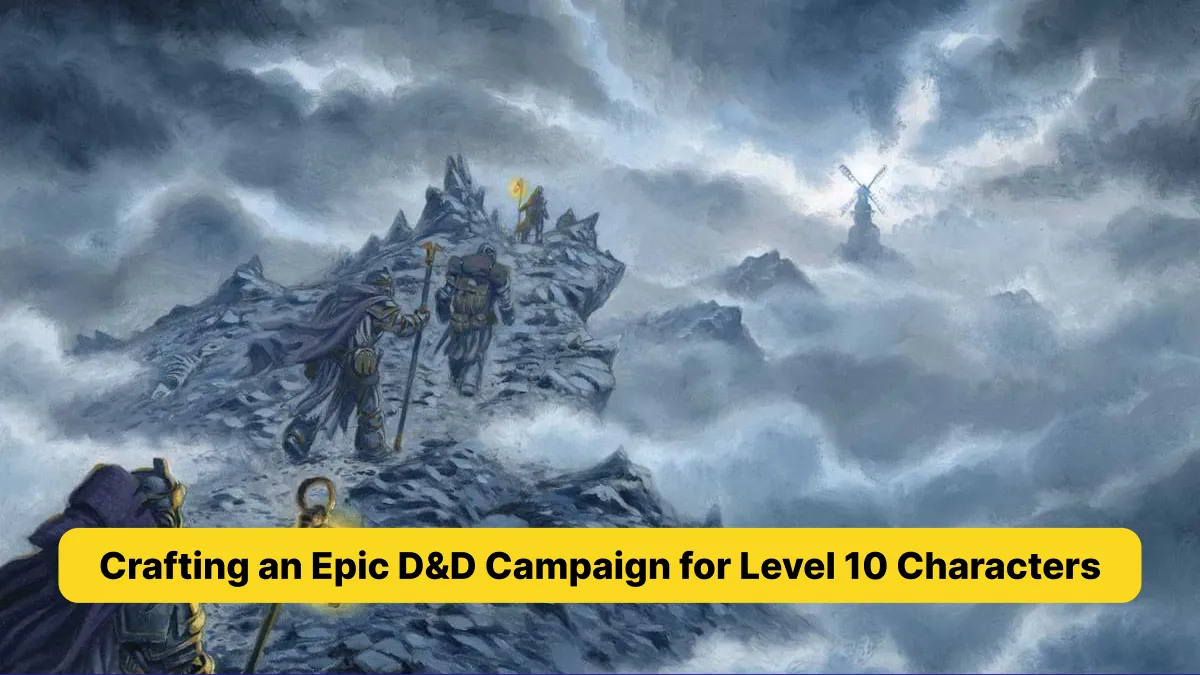Creating a memorable Dungeons & Dragons (D&D) campaign for level 10 characters can be both exciting and challenging. At this level, your players have gained significant abilities and resources. To keep the game engaging, you need a campaign that matches their power and skills. Here’s a detailed guide to help you build an epic adventure.
Understand Your Characters
First, get to know your players’ characters. At level 10, they will have various abilities and items. Each character likely has a unique backstory and goals. Understanding these can help you tailor the campaign to their strengths and weaknesses.
Ask your players about their characters’ motivations and fears. This can guide you in creating personal stakes. For example, if a character has a tragic past involving dragons, you might incorporate a dragon-related plot.
Build a Compelling Plot
Next, craft a story that will captivate your players. At level 10, characters are powerful and can handle more complex plots. Here are a few ideas for creating an engaging story:
- Epic Quest: Start with a grand quest. Perhaps a powerful artifact has been stolen, and it’s up to the players to retrieve it. This artifact could have far-reaching consequences if used by the wrong hands.
- Political Intrigue: Level 10 characters can deal with political plots. Maybe a kingdom is on the brink of civil war, and the players need to navigate through alliances and betrayals.
- Ancient Evil: Introduce an ancient evil that has been dormant for centuries. The players must uncover and stop this threat before it awakens.
Design Challenging Encounters
The encounters in your campaign should be challenging but fair. At level 10, your players can handle more complex and difficult battles. Use the following tips to design these encounters:
- Varied Enemies: Mix different types of enemies to keep battles interesting. For instance, combine magic users with melee fighters. This forces players to adapt their strategies.
- Tactical Terrain: Create battle maps with interesting terrain. High ground, traps, and obstacles can make encounters more engaging and strategic.
- Powerful Bosses: Include boss fights that test the players’ skills. These bosses should have unique abilities and strategies. Perhaps a powerful lich who can summon undead minions, or a giant elemental that controls the battlefield.
Incorporate Player Backstories
Use the characters’ backstories in your campaign. This makes the game feel personal and immersive. For example, if a character has a family feud, incorporate it into the main plot. This can add emotional depth and motivate players to engage more with the story.
You might also include NPCs from their past. These familiar faces can provide aid or pose new challenges. By linking the main plot to their backstories, you make the adventure feel more relevant to the characters.
Plan for Flexibility
While it’s important to have a plan, be ready to adapt. Players can be unpredictable, and they might make choices that you didn’t anticipate. Prepare for this by having a flexible outline.
For instance, if players choose to ally with a faction you didn’t expect, have a few alternative scenarios ready. This way, you can keep the game on track while still responding to their choices.
Create Immersive Environments
To enhance the experience, build immersive environments. Use detailed descriptions to bring scenes to life. Describe the sights, sounds, and smells of the settings. This helps players feel like they are truly in the world you’ve created.
Consider using visual aids like maps or props. These can make the game more engaging and help players visualize their surroundings.
Reward Player Actions
Finally, reward your players for their actions. Level 10 characters should receive meaningful rewards for their achievements. This could be in the form of powerful magic items, new abilities, or significant plot developments.
Celebrate their victories with special loot or recognition. This not only acknowledges their efforts but also motivates them to continue exploring and engaging with the story.
Conclusion
Creating an epic D&D campaign for level 10 characters involves understanding your players, crafting a compelling plot, designing challenging encounters, incorporating backstories, and planning for flexibility. By focusing on these elements, you can build a memorable adventure that will keep your players excited and invested.
Remember to make the game personal and immersive, and don’t forget to reward your players for their efforts. With these tips, you’ll be well on your way to creating a fantastic campaign that your group will enjoy for many sessions to come.
